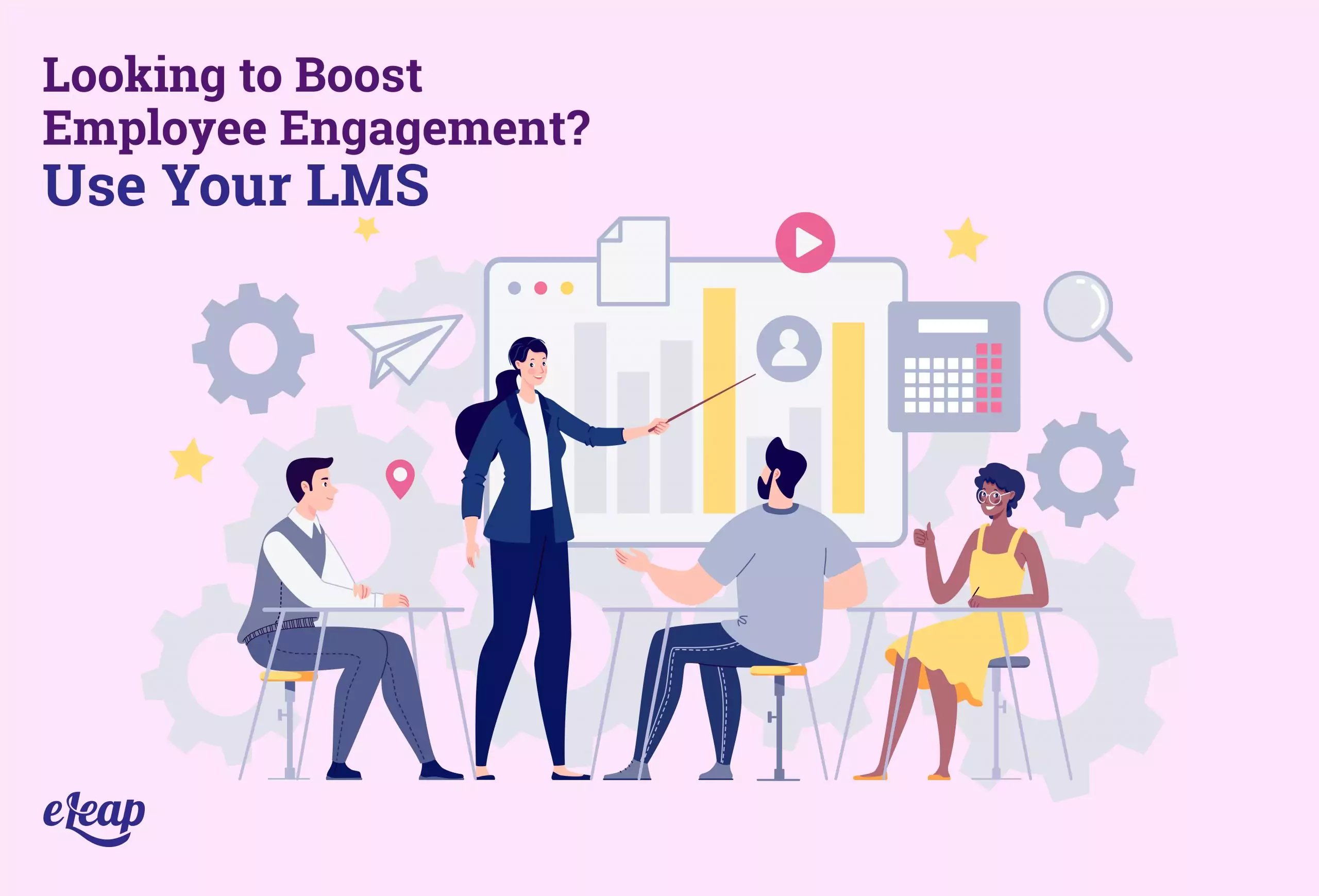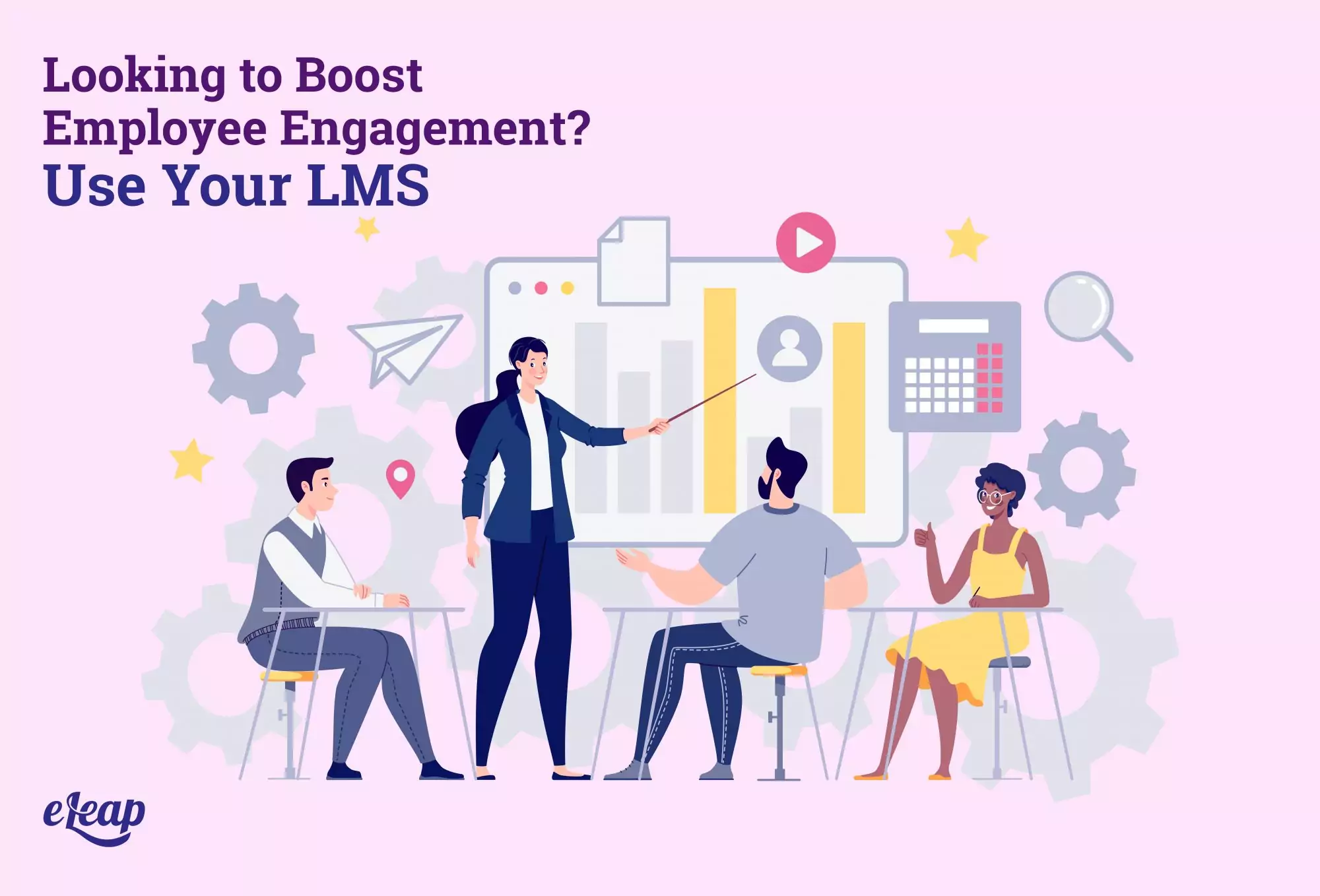Looking to Boost Employee Engagement? Use Your LMS

Employee engagement is vital, but it can be challenging to raise. When we talk about it, much of the discussion focuses on things like wellness programs, regular performance-focused check-ins, and one-on-ones, or changing your company’s culture. Those are important steps, certainly. However, you may be overlooking one of the most critical weapons in your arsenal – your learning management system (LMS).
Of course, it can be challenging to see how an LMS can increase employee engagement. This is particularly true given that many leaders do not understand the correlation between employee performance and development. In this post, we will explore important ways to use your LMS to drive engagement and create a more cohesive, successful team.

Two Sides of the Same Coin
Employee performance and employee development may not seem related, but they are. In truth, you cannot have one without the other. They are two sides of the same coin. Improved learning and development drives improved performance, which in turn drives further development. It’s the opposite of a vicious circle, with growth building upon growth and fostering success.
Crucial LMS Engagement Tips
How do you use an LMS to drive employee engagement? We’ve broken this complex topic down into several manageable tips below to help you implement it with greater ease and less hassle.
1. Let Them Be Independent
Once, employees were told what they needed to learn and when they were allowed to learn it. This had the unfortunate effect of driving a wedge between the learner and the learning – it was something employees had no control over, so they felt that it was not really part of their development. It was something artificial being foisted upon them by higher-ups, but the industry, or by the government (particularly in the case of mandatory corporate training).
Learning and development should not be seen as a burden placed upon employees. It should be something they want to do, that they choose on their own. The only way to create that sense of personal ownership is to allow them to be independent learners.
How do you foster a sense of independence or the notion that the employee is in charge of their own development? The answer is to make your LMS available 24/7 for online use. Go ahead and set a time frame for module completion, but let your employees decide when they will complete their learning.
2. Give Them Options
We’ve all heard by now that there are different types of learners out there. Some learn well by reading. Others by viewing, and yet others by doing. How does this affect your LMS and your push to enhance engagement? Simply put, it means you need to deliver content in different formats.
Here’s the thing – if all of your modules are text-based, multi-page things, your learners (even those who learn well by reading) are going to mentally check out. You need to mix things up. The right combination of different delivery formats encourages employees to learn more, breaks up the monotony, and helps improve information retention, while also making people more excited about learning (and thereby more excited about their roles in the organization).
There is no rule set in stone that dictates what types of content to use. Get creative. Today’s technology is advanced enough that you have many, many options. Go with text, video, gamified content, webinars, instructor-led learning, and anything else to help chunk up your learning and keep your people engaged and moving forward.
3. Track Performance and Offer a Helping Hand
One of the most important tips for improving employee engagement through your LMS is this – use the information being generated by employees completing their learning. For instance, admins can access the eLeaP dashboard and track a wide range of metrics generated by learners, including the number of logins, course completions, dwell time, and a great deal more.
This information is valuable, and not just because it allows you to see where employees are struggling. Use that data to inform your training programs and offer help to employees struggling with particular topics. Use it to further engage employees who do well in particular areas, and let that lead into further development and learning that speaks to developing an employee along a career path that is well-suited to their unique strengths.
4. Make It Personal
When was the last time you felt really engaged in something generic? Chances are it was never. Your employees are no different. Generic learning material is going to create a disconnect and drive disengagement. You can get around that by personalizing their learning and development path.
There are many ways to create personalized learning, and you will need to determine the right options for your organization, as well as for each employee. One of the better options is to create content that is specific to an employee’s career path, based on a deep understanding of their personal and professional goals, their innate talents, and their strengths, both those present now and those that can be developed over time.
When employees feel supported in their careers and see that their employer is willing to invest in helping them achieve their goals, it creates a dramatic increase in engagement. Personalized learning will also help set your organization apart from others in the industry, helping ensure that you become an employer of note for the right reasons, and ensuring that you’re able to attract and retain top talent.
A Plan to Follow
With the information discussed here, you should understand the importance of engagement and the role that your LMS can play in driving and maintaining it. However, it should be noted that the right learning management system is crucial. While there are dozens, perhaps hundreds, of options available, cloud-based systems that offer mobile access around the clock and ensure that you’re able to access a robust library of content as well as creating your own content are the ideal choices. Contact us to learn more about how eLeaP can support optimum learning outcomes while driving better employee engagement.